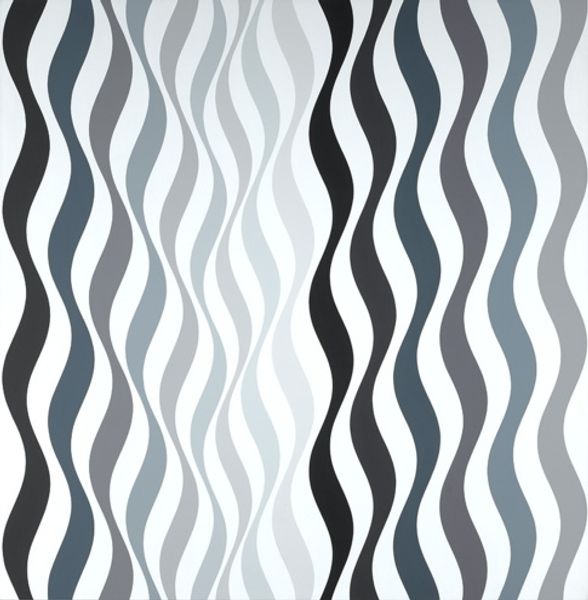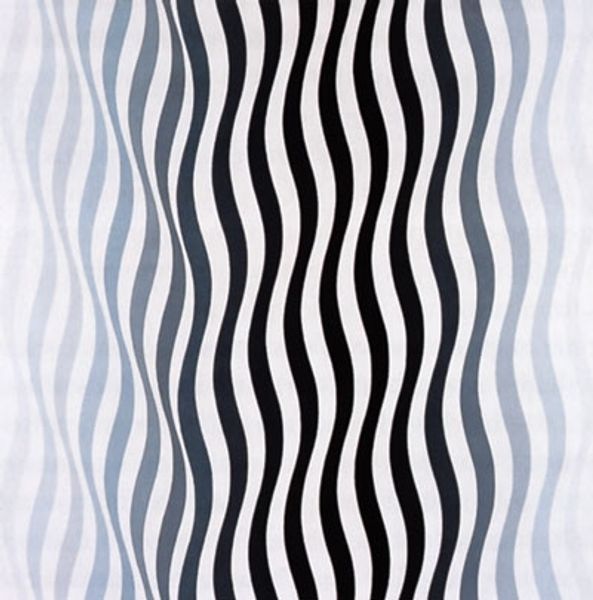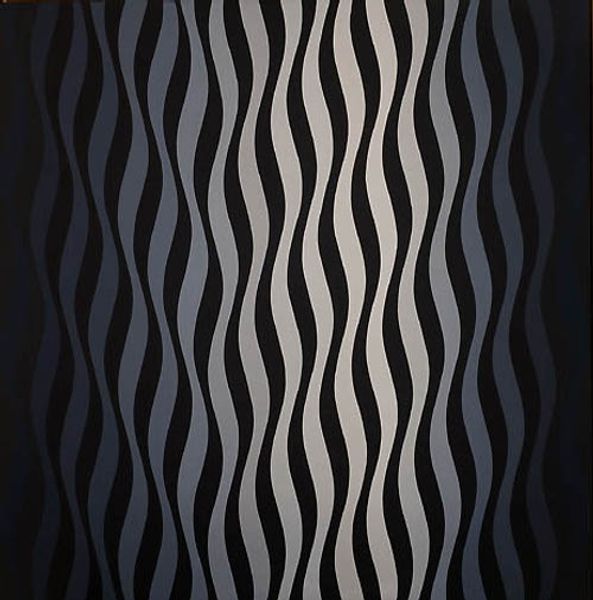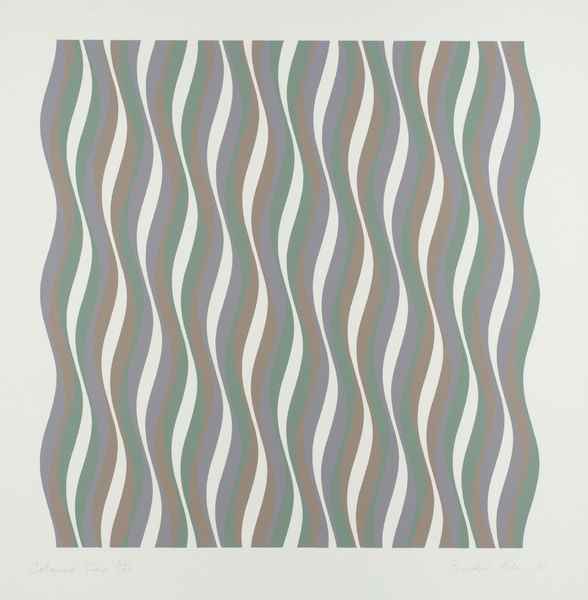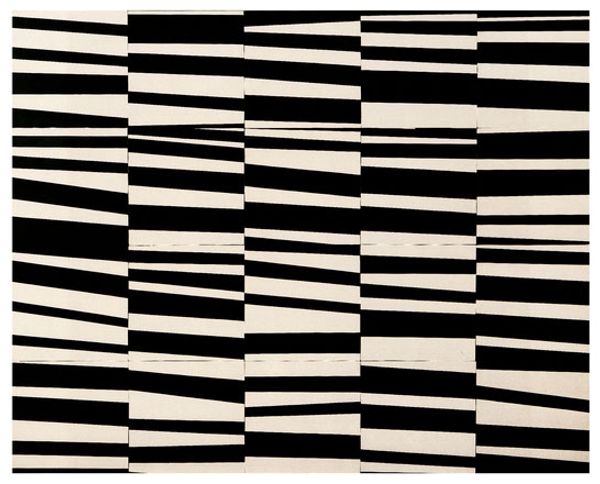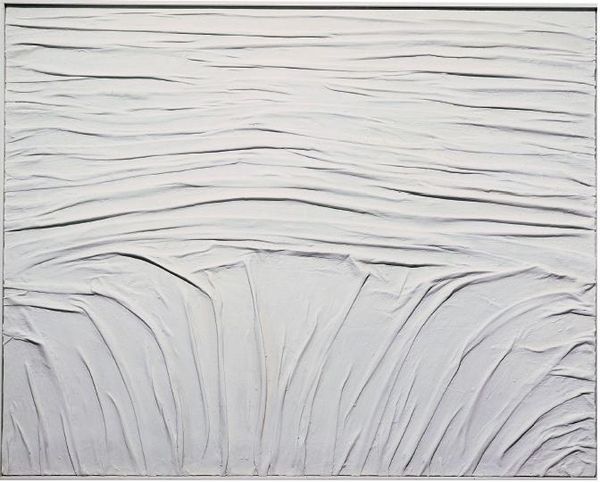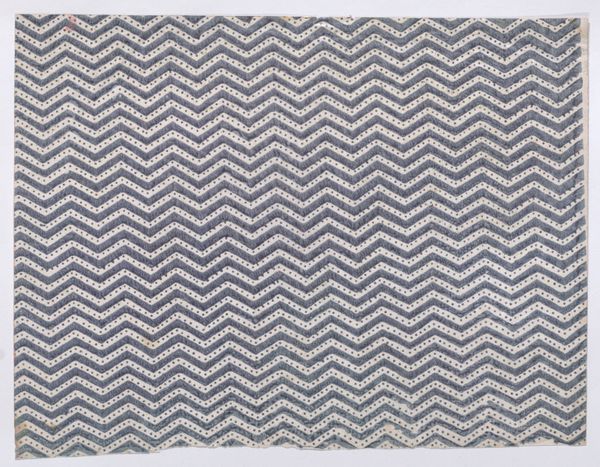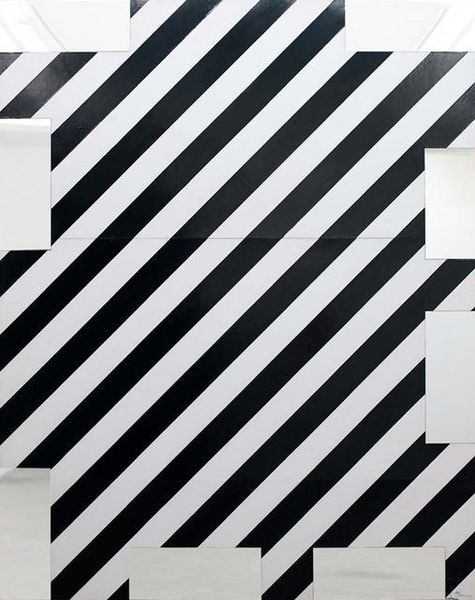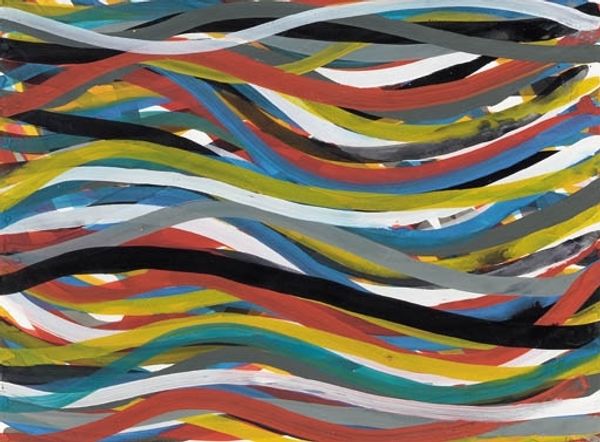
Copyright: Bridget Riley,Fair Use
Curator: We’re standing in front of Bridget Riley's "Arrest 3," an acrylic on canvas created in 1965. Editor: My eyes feel a little seasick. All those wavering lines give me a sensation of constant, gentle movement. There's something hypnotic about it. Curator: Indeed. Riley was at the forefront of Op Art, which explored precisely these kinds of perceptual effects. It really emerged as a cultural phenomenon in the '60s. The monochrome palette allowed her to exploit purely visual effects. The pattern feels both very organic and deliberately artificial. Editor: You’re right. It’s this play of light and dark, the subtle gradations, that trick the eye. What is fascinating, I think, is how universally these simple contrasts impact human perception. We're hardwired to respond. The waveforms are so very primal. The dark almost feels threatening and dominant while the greys are retreating away, a flight to safety. Curator: And, the use of geometric shapes wasn't divorced from broader social trends. There's a connection, however implicit, to the mass production of images, and the slick design sensibilities of the time. The almost mechanical precision reflects technological progress. And don’t forget how Hard-edge Painting which favors abstraction influenced the cultural landscape. Editor: That’s valid. Although, it does feel interesting that even mass-produced imagery can access those deeper, almost Jungian, collective associations. Waves mean migration, tides, time, birth, death. These are deeply embedded. The effect feels immediate. Curator: Absolutely. But it's also crucial to remember the role of galleries and critics in elevating these movements. Without their institutional support, Riley's innovations may not have found such wide acclaim. Editor: Perhaps, but I suspect these archetypes are potent even outside formal gallery settings. Curator: The genius of Riley is that she forces us to think about how art is received by the eye and also received by the establishment. It’s an interplay, as intricate as the canvas itself. Editor: Agreed. Even after analysis, I'm left with the primary, overwhelming impression of constant undulating motion, almost mimicking my breathing.
Comments
No comments
Be the first to comment and join the conversation on the ultimate creative platform.
